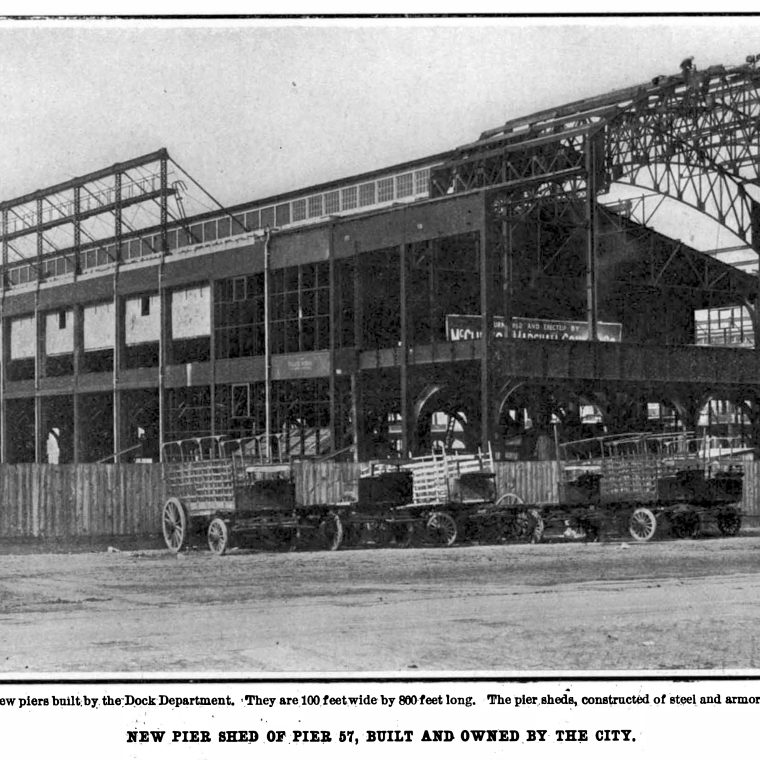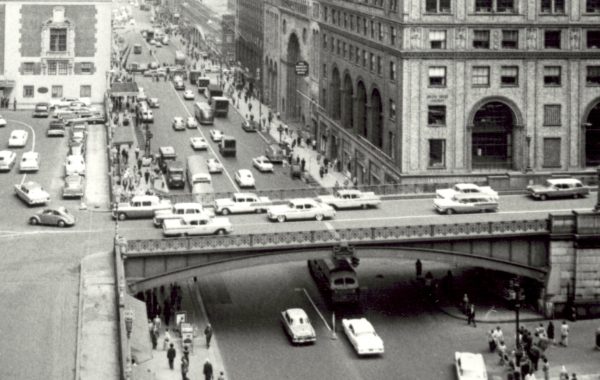Shortly after 1900, New York City began a program of replacing old piers, particularly on the Hudson waterfront, with new ones. The reason was simple: ships were getting bigger. In 1900, the longest passenger ship (and in those pre-containerization days, passenger ships tended to be bigger than freighters) was RMS Oceanic at 704 feet; in 1907 RMS Lusitania was 787 feet and the Lusitania’s sister ship the Mauretania was 790 feet long later that year; RMS Olympicand Titanic followed in 1911 and 1912 at 883 feet long. For New York to remain the port of call for the premiere trans-Atlantic steamers, bigger piers were required – longer, more widely spaced, and capable of handling larger numbers of passengers from each ship. This is a clear example – hardly the only one – of how technological advance in one field forces changes in others.
The picture above, from Scientific American’s “New York” issue, shows pier 57 under construction near 15th Street. Most of the structure visible is still there, although the headhouse, parallel to the street, has been heavily modified. There was a long row of nearly identical piers built in the 1900s and 1910s. Here’s a 1910s view of the row of piers north of 12th Street, with the headhouses blocking all view of the Hudson.. Pier 57 would be beyond the right edge of the frame.

The water-facing view of the piers was more utilitarian. Here’s an early 1950s view of Pier 54 from the back:

These piers were 800 feet long, so newer and bigger piers were eventually built uptown for the Olympic and the giant liners that followed. Just as the rise of those liners created the need for the piers, the collapse of ship travel in the 1950s and 60s, caused entirely by the development of passenger jets capable of comfortably crossing the Atlantic, led to the abandonment of the piers. Some have been redeveloped, most have been demolished and replaced by other structures.
Here’s the preserved remnant of the main entrance to pier 54 (Photograph by Mike Peel (www.mikepeel.net). This was the pier where RMS Carpathia tied up in 1912 with the Titanic survivors, and was the NYC home pier of the Lusitania.

Finally, the magazine editors felt that it was still worthy of note in 1908 that the new piers were of entirely non-combustible construction. Here’s a nice photo of the draped-mesh slab construction in progress:





You must be logged in to post a comment.